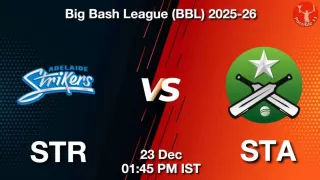Predicting Outcomes in T20 vs. Test Matches: Key Differences

Predicting results in any sport is a complex process that involves a detailed study of the sport, players, and the teams involved in the fixture. However, when it comes to cricket, predicting any fixture is a difficult set of algorithms that involves multiple statistics and different conditions. Cricket is an unpredictable game and the outcome depends on multiple factors and even then the result might not be what was predicted.
Two extreme formats of cricket - T20 and Test - have become two entertaining pillars in the sport. They have different rules and regulations but still the two formats are equally entertaining.
T20 cricket is the newest format of cricket that officially started in 2003. The format took time to gain the attention of cricket fans but eventually, it became the centre point of the sport. The shortest format also gained the attention of different cricket boards and hence the T20 cricket leagues took birth. It was primarily because of the T20 cricket league, the shortest format of cricket became the most watched format in international cricket. For more detailed cricket match predictions and insights into upcoming fixtures, keep an eye on expert analyses.
Test cricket is the oldest format of the game and it is part of the history. The rules and regulations are still old school and it is also considered as the real test of talent for a cricketer. With the start of World Test Champions, Test cricket again gained the lost charm and now it is entertaining and thrilling in its own way.
In this article, we dive deep into the key differences to predict the outcome of T20 and Test cricket.
Game of Chance vs Endurance and Patience
The shortest format of cricket mostly depends on the number of chances a team can take on the basis of the skillset it has come to play. The T20 format is a short-form game which has only 20 overs in an innings. Both sides have very little time to make a decision and stick to it. The team has to change its decisions very quickly to get positive results.
When it comes to Test cricket, a team and an individual have a lot of time and overs in hand to try a strategy. The red-ball format required patience and trust during the game. Winning and losing depends on these two primary factors.
Hence, while predicting an outcome in T20 cricket, the skill of the players and their decision-making power should be studied. Meanwhile, in Test cricket, the overall talent and endurance should be studied.
Pitch and Weather Conditions
One of the biggest factors that influence the outcome of the game in Test cricket is the pitch condition. Test cricket is a 5-day format and the pitch might take a turn during the game. While predicting an outcome for a Test match, the pitch should be studied very closely with the weather conditions during those 5 days.
When it comes to T20 format, the pitch conditions are not that important. Pitch might play a role but more than that, the risk-taking ability of the players plays an important role.
Team Composition
Team composition plays the most important role in both formats of the game. However, the team composition is different for both formats. In the T20 format, the team composition needs to be more aggressive and the player should be allowed to take risks. When it comes to Test cricket, the team composition is more tactical. In T20 cricket, a player who is fearless in making decisions will win the match for the team but in Test cricket, a player who is talented and has more experience will change the course of the game.












Give Your Feedback